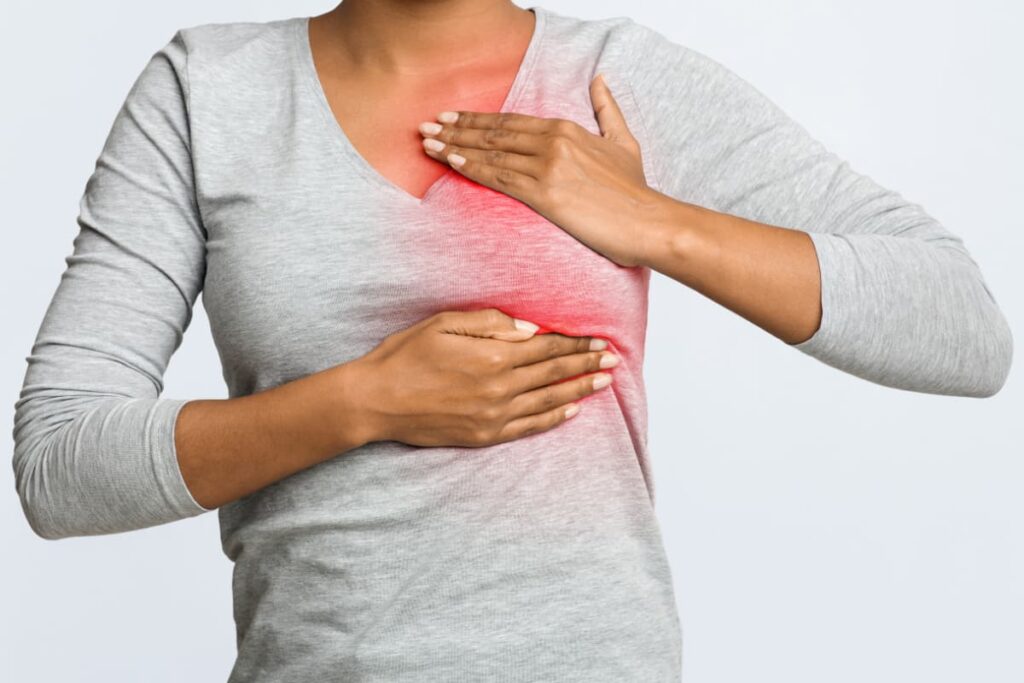THE BREAST
The breasts are glandular organs that sit atop the chest wall and pectoral muscles.
The breast anatomy of males and females is slightly different. Female breasts have milk ducts and glandular tissue that aid breastfeeding. Male and female breast nipples have many nerves that enhance sexual arousal. All genders can get breast cancer. Women are more prone to benign (noncancerous) breast disease.
Breasts are part of the female and male sexual anatomy. For females, breasts are both functional (for breastfeeding) and sexual (bringing pleasure). The visible parts of breast anatomy include the nipples and areolae.

HOW DO BREASTS WORK?
Female hormones namely, estrogen, progesterone, and prolactin play a key role in breast development and function.
- Estrogen stretches milk ducts and helps them create side branches to carry more milk.
- Prolactin promotes the production of progesterone and prepares glands for milk production.
- Progesterone increases the number and size of lobules in preparation for breastfeeding. This hormone also enlarges blood vessels and breast cells after ovulation. You may experience swollen, tender breasts
BREAST STRUCTURE
Female breasts are rarely symmetrical. In most cases, a breast is usually slightly larger or smaller, higher or lower, or of a different shape to the other side. When fully developed, the female adult breast is composed of 15–20 lobes of branching glands. These lobes are separated by bands of connective tissue, which radiate out from the nipple like spokes from the middle of a bicycle wheel. There is a lot of fat tissue within the breast. The amount of fat determines the size of the breast. The fatty tissue gives the breast its soft consistency.
BREAST CANCER
Breast cancer is cancer that forms in the cells of the breasts or cancer that arises in the lining cells (epithelium) of the ducts (85%) or lobules (15%) in the glandular tissue of the breast. Initially, the cancerous growth is confined to the duct or lobule (“in situ”) where it generally causes no symptoms and has minimal potential for spread (metastasis).
Over time, these in situ (stage 0) cancers may progress and invade the surrounding breast tissue (invasive breast cancer) and then spread to the nearby lymph nodes (regional metastasis) or to other organs in the body (distant metastasis). If a woman dies from breast cancer, it is because of widespread metastasis.
Breast cancer treatment can be highly effective, especially when the disease is identified early. Treatment of breast cancer often consists of a combination of surgical removal, radiation therapy, and medication (hormonal therapy, chemotherapy, and/or targeted biological therapy) to treat microscopic cancer that has spread from the breast tumor through the blood. Such treatment can prevent cancer growth and spread, thereby saving lives.


